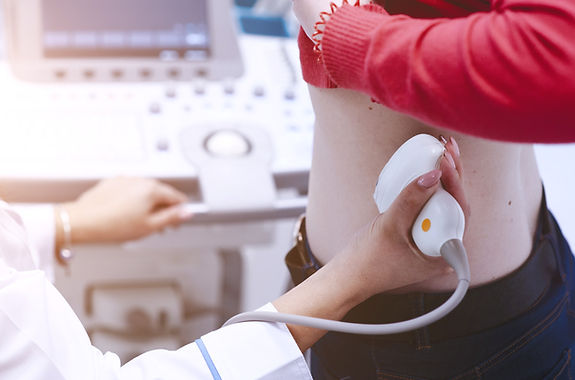
DIAGNOSING NEPHROPTOSIS
DIAGNOSING NEPHROPTOSIS
Diagnosis of this condition is usually a diagnosis of exclusion when all other potential causes of abdominal pain have been ruled out. The challenge with this diagnosis is that traditional CT scans, X-rays and ultrasounds are usually conducted in the supine position making ptotic kidneys appear entirely normal.
Only scans conducted in the erect and supine position for example isotope renography or ultrasound can demonstrate the positional change in individuals with nephroptosis.
The other difficulty diagnosing patients with this condition is that without clinical suspicion of nephroptosis, scans which detect this condition would not be routinely requested.
Patients with nephroptosis may have a palpable abdominal mass which they may be able to move into a more anatomical position which can temporarily relieve symptoms. If symptoms return when the kidney returns back into a ptotic position, a diagnosis of nephroptosis should be suspected.
Imaging studies
Each of these studies must all be performed with the patient both in the supine and upright position in order to demonstrate the descent of the kidney (>5cm) and if there is any functional alteration/ obstruction in the upright position
-
Ultrasonography (US) with Colour Doppler Imaging (CDI)
-
Radioisotope Renography Scan (Tc-MAG3)
-
Intravenous Urogram (IVU)
Findings which support nephroptosis on imaging studies:
-
Ptosis >5cm when moving from a supine to upright position
-
Obstruction or kink in the ureter when upright but not supine
-
Decreased renal perfusion and GFR when upright but not supine
-
Renal Pelvic Dilation/ Hydronephrosis
-
Delayed Emptying
(Ultrasound imaging with CDI has been demonstrated in several studies to have a greater detection of the changes in renal blood flow in comparison to Isotope renography)
Patients with nephroptosis can have symptoms such as abdominal pain with or without functional alterations. Recent studies have demonstrated patients without functional alterations of the nephrotic kidney can still benefit from surgical treatment in terms of symptom relief.

